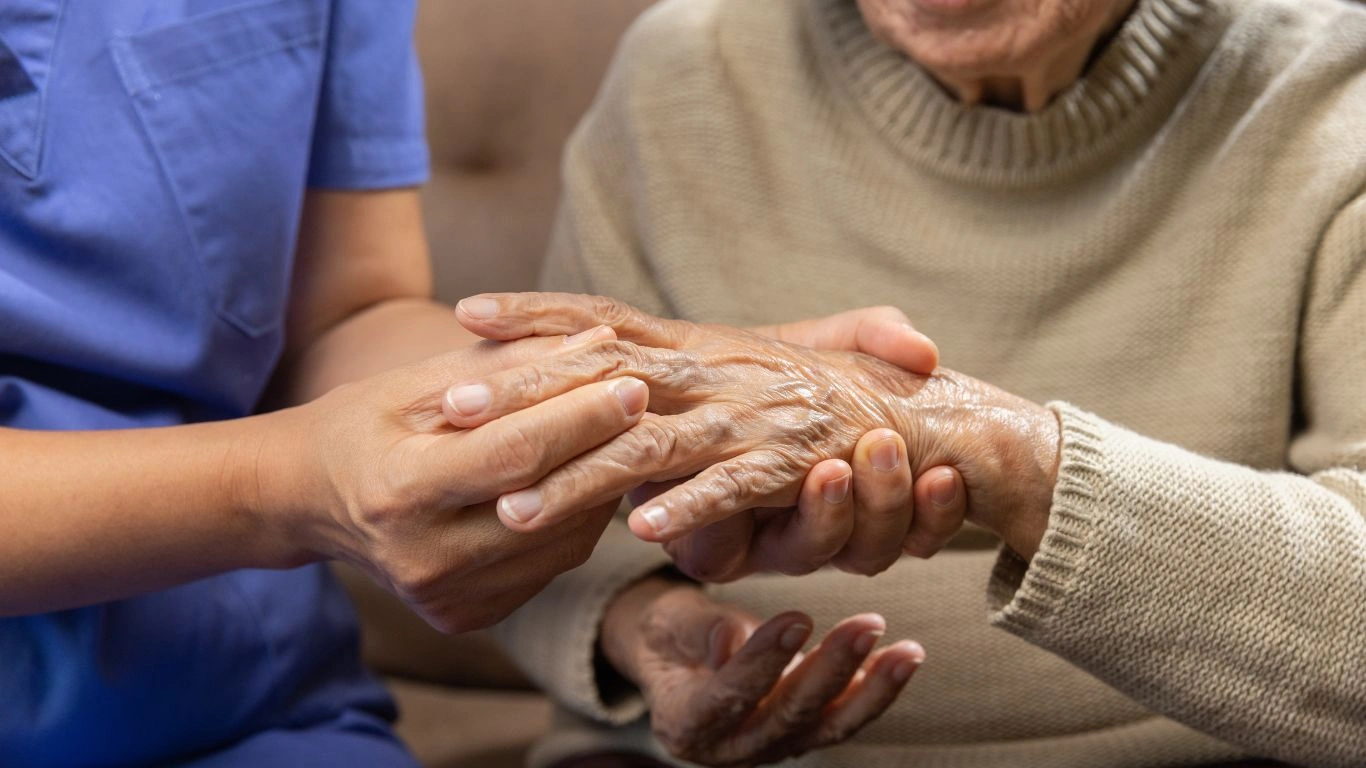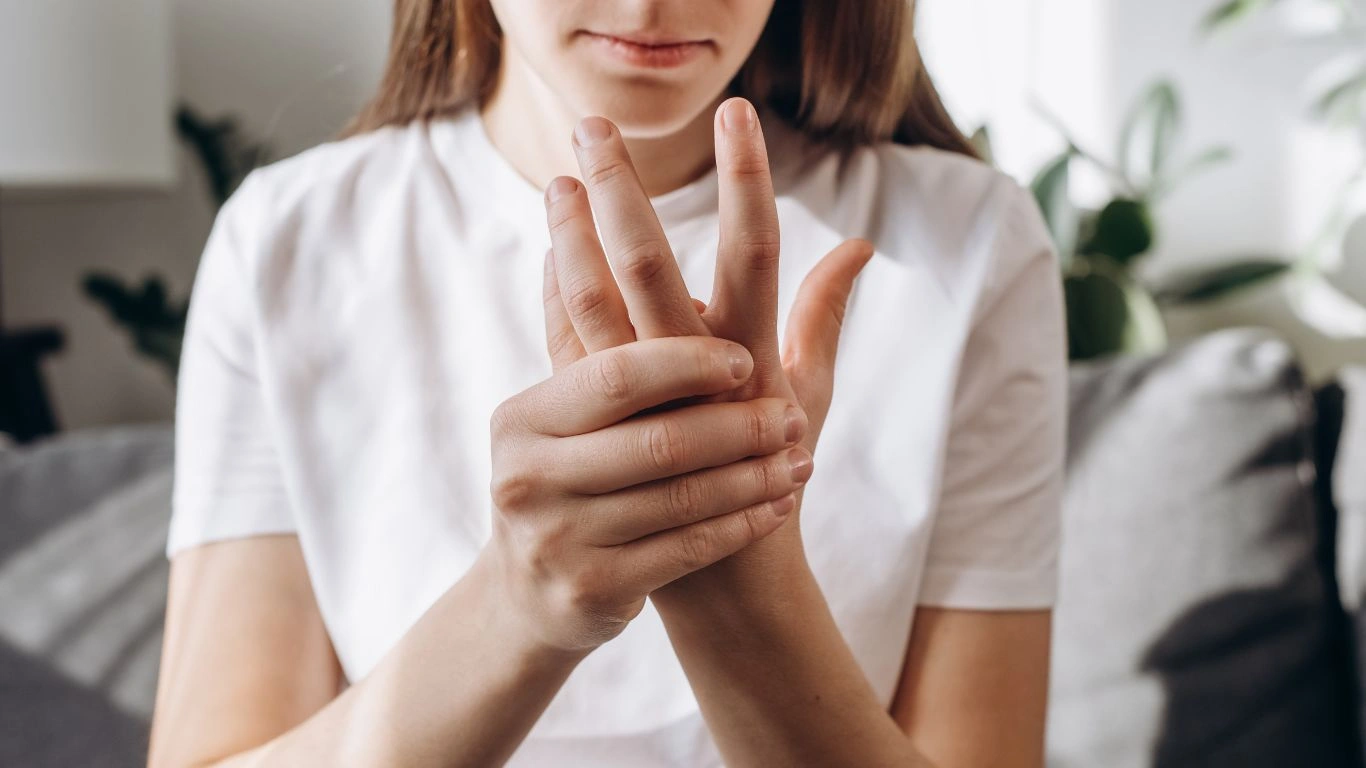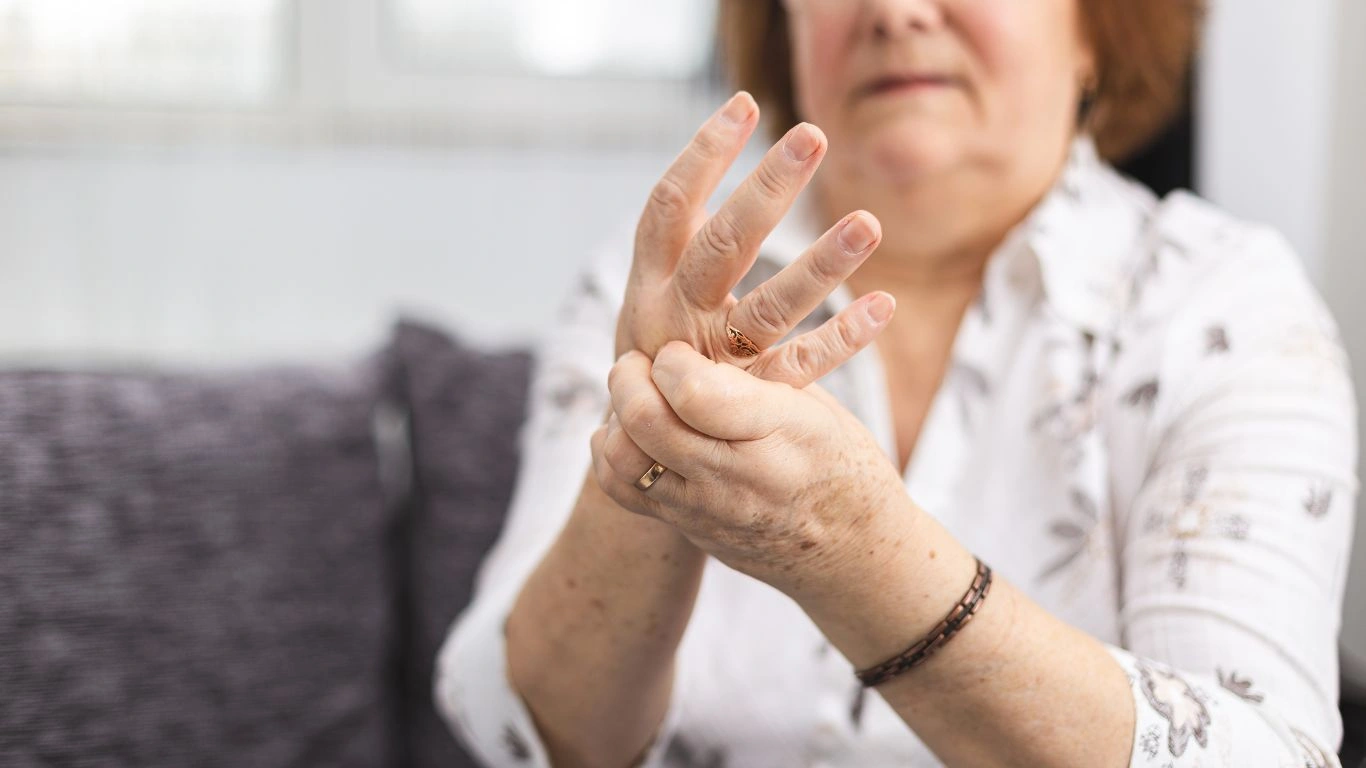Effective Rheumatoid Arthritis and Self-Care Tips for Pain Relief
If you’re living with rheumatoid arthritis, you already know it’s more than just joint pain — it’s a daily challenge that can test your patience, energy, and overall well-being. From my years working as a rheumatology nurse practitioner, I’ve seen firsthand how the right self-care strategies can make a real difference in managing symptoms and improving quality of life. So, let’s talk about rheumatoid arthritis and self-care tips for pain relief, because taking control of your condition doesn’t have to feel overwhelming or out of reach.
Rheumatoid arthritis (RA) is a chronic autoimmune condition where your body’s immune system mistakenly attacks the lining of your joints, causing inflammation, pain, stiffness, and sometimes even joint damage. What many people don’t realize is how much lifestyle choices and self-care routines impact how you feel day to day. Over time, I’ve learned that combining medical treatments with practical, simple self-care techniques helps patients not just cope but thrive.
Understanding Rheumatoid Arthritis: Why Self-Care Matters

One of the most important things I emphasize to every patient is that self-care is a vital part of managing rheumatoid arthritis. You’re not just a passive recipient of treatments — you’re the center of your care team. When you learn to listen to your body and respond thoughtfully, you can reduce pain flare-ups and even slow down joint damage.
Self-care for RA isn’t a one-size-fits-all solution. It’s a combination of small but consistent habits that work in tandem with your prescribed medications. Over the years, I’ve seen people transform their lives by making changes as simple as adjusting their daily activity, improving sleep quality, or incorporating gentle movement routines.
Why Pain Relief Through Self-Care is Essential
Pain with RA is complex. It’s not just the swelling; it’s the way chronic pain affects your mood, sleep, and even your relationships. When you practice self-care aimed at pain relief, you’re not just masking symptoms — you’re addressing some root causes that often get overlooked.
- Reduces reliance on medications: While medication is crucial, managing pain through self-care can lessen the need for higher doses or additional prescriptions.
- Improves mental health: Feeling in control of your pain can lower anxiety and depression, common companions of chronic illness.
- Boosts overall function: When pain is managed well, movement gets easier, and daily tasks become less exhausting.
During my clinical practice, I’ve always encouraged patients to view pain relief as a multifaceted goal—one that involves mind, body, and lifestyle changes. That mindset shift makes all the difference.
Top Rheumatoid Arthritis Self-Care Tips for Pain Relief

Here are some tried-and-true self-care tips that I’ve recommended countless times, and they consistently help ease RA pain and stiffness:
1. Prioritize Gentle Movement and Stretching
Staying active might sound counterintuitive when your joints hurt, but trust me, gentle exercises like stretching, yoga, or swimming can actually reduce stiffness and boost circulation. I always suggest starting slow — even 5-10 minutes a day can improve joint flexibility over time.
2. Use Heat and Cold Therapy
Applying heat can soothe tight muscles and ease joint stiffness, while cold packs are great for calming inflamed areas during flare-ups. I often tell patients to keep a few reusable cold packs and heating pads handy to switch between as needed.
3. Focus on Balanced Nutrition
What you eat plays a surprisingly big role in inflammation. Incorporating anti-inflammatory foods—like fatty fish, leafy greens, nuts, and berries—can help tone down your body’s inflammatory response. Plus, maintaining a healthy weight reduces extra strain on your joints, something I always discuss during consultations.
4. Get Quality Sleep to Recharge Your Body
One thing I always stress to my patients is how critical good sleep is for managing rheumatoid arthritis pain. Poor sleep can worsen inflammation and make your body’s natural healing much harder. When I talk to people struggling with RA, I often hear about restless nights and waking up stiff. From my experience, establishing a calming bedtime routine and creating a comfortable sleep environment can really help. That means limiting screen time before bed, keeping your bedroom cool, and maybe even trying relaxation techniques like deep breathing or gentle stretching.
5. Manage Stress: It’s More Powerful Than You Think
Stress and RA pain often feed off each other. When you’re stressed, your body produces more inflammatory chemicals, which can trigger flare-ups. Over the years, I’ve seen stress management go from a “nice-to-have” to an essential part of care. Whether it’s meditation, journaling, or simply taking a quiet walk outdoors, finding ways to decompress can lessen your pain and improve your mood. I encourage patients to experiment with what works for them, because no two stress-relief strategies look the same.
Practical Lifestyle Adjustments to Support Pain Relief

Living well with rheumatoid arthritis means adapting your environment and habits to reduce unnecessary strain on your joints. Over the years, I’ve noticed small tweaks can add up to big relief.
Ergonomic Tools and Home Modifications
From kitchen gadgets to special grips for pens and utensils, using tools designed to protect your joints can make daily tasks easier and less painful. I often recommend patients explore adaptive devices—they’re surprisingly affordable and can save your joints a lot of wear and tear.
Break Tasks into Manageable Steps
One of the most common tips I share is pacing yourself. Instead of tackling big chores all at once, break them into smaller chunks and take breaks in between. This simple habit helps prevent overuse of inflamed joints and keeps fatigue at bay.
Stay Hydrated and Maintain a Healthy Weight
Drinking plenty of water supports overall joint health, and maintaining a healthy weight reduces pressure on your knees, hips, and other weight-bearing joints. I’ve seen many patients feel less pain and gain mobility simply by adopting healthier eating habits and staying well-hydrated.
Why Building a Support System is a Game Changer

Living with a chronic condition like RA can feel isolating at times, but having a strong support system can make a huge difference. Throughout my career, I’ve witnessed how emotional support from family, friends, or even fellow patients helps lighten the burden of chronic pain.
Connect With Others Who Understand
Support groups, whether in person or online, offer a space to share experiences, swap tips, and simply feel understood. It’s amazing how just knowing you’re not alone can boost your resilience and motivation to stick with self-care routines.
Communicate Openly With Your Healthcare Team
Never hesitate to talk openly with your doctors and nurses about what’s working and what’s not. I always tell patients that honest communication helps us tailor treatments and self-care advice to fit their unique needs. You’re the expert on how your body feels, and your input is invaluable.
Enlist Help When Needed
Don’t be afraid to ask for help with physically demanding tasks or emotional support. RA can be unpredictable, and having someone to lean on during tough times is part of smart self-care.
Emerging Tools and Techniques to Enhance Self-Care

Technology has opened up some exciting new ways to manage RA pain and track symptoms. From smartphone apps that remind you to move or take medications to wearable devices that monitor joint health, there are plenty of tools that can make self-care easier and more personalized.
Using Apps for Medication and Symptom Tracking
I often suggest my patients try apps that help log their pain levels, joint stiffness, and medication schedules. This data can be incredibly helpful for your healthcare provider to understand your disease pattern and adjust treatments accordingly.
Telehealth and Virtual Support
Especially in recent years, telehealth has become a game changer for RA management. Virtual check-ins mean you can get timely advice without the stress of travel when your joints are flared up or mobility is limited. It’s another layer of support that complements your self-care efforts.
In my experience, combining these modern tools with tried-and-true self-care habits empowers people with RA to live more comfortably and confidently. And that’s really what it’s all about — finding your own balance and rhythm in managing rheumatoid arthritis pain.
Incorporating Mindfulness and Mental Wellness Into Your RA Self-Care

Living with rheumatoid arthritis isn’t just about managing physical symptoms—it’s also about tending to your mental and emotional health. From my years as a rheumatology nurse practitioner, I can’t stress enough how powerful mindfulness and mental wellness practices are when it comes to controlling pain and improving quality of life.
The Role of Mindfulness in Pain Relief
Mindfulness isn’t just a trendy buzzword; it’s a practical tool to help you become more aware of your body’s signals without being overwhelmed by them. Many of the patients I’ve worked with report that mindfulness techniques like deep breathing, guided meditation, or simply sitting quietly and noticing their thoughts help them reduce the intensity of their pain and anxiety.
When you practice mindfulness regularly, you train your brain to respond differently to pain. Instead of reacting with frustration or fear, you develop a calmer, more accepting attitude that can lessen how much pain dominates your day. I often recommend starting with just a few minutes daily and gradually increasing the time as it feels comfortable.
Addressing the Emotional Challenges of RA
It’s normal—and okay—to feel frustrated, sad, or even angry about living with a chronic illness. Emotional ups and downs are part of the journey, but untreated stress and depression can make physical symptoms worse. From my perspective, integrating mental health support into your self-care routine can be a real game changer.
- Therapy or counseling: Talking with a professional can provide strategies to cope with chronic illness stresses and boost your resilience.
- Peer support: Sharing your experiences with others who truly understand can ease feelings of isolation.
- Creative outlets: Hobbies like writing, painting, or music can be therapeutic and distract from pain.
Based on what I’ve seen, patients who prioritize mental wellness alongside physical care often experience fewer flare-ups and a better overall sense of well-being.
Personalizing Your Rheumatoid Arthritis Self-Care Plan

No two people experience rheumatoid arthritis in exactly the same way, so it’s essential that your self-care plan fits your unique needs, lifestyle, and preferences. Throughout my practice, I’ve learned that collaboration between patient and provider is key to creating an effective, sustainable approach.
Start Small and Build Gradually
If you’re feeling overwhelmed, try focusing on just one or two changes at a time. Whether it’s incorporating a short daily walk or experimenting with anti-inflammatory meals, small wins can build momentum and confidence.
Track Your Progress and Adjust
Keep a journal or use an app to note what helps and what doesn’t. Over time, you’ll get a clearer picture of which self-care techniques make the biggest difference for your pain relief and overall comfort.
Partner With Your Healthcare Team
Don’t hesitate to bring questions, concerns, and new ideas to your rheumatologist, nurse practitioner, or physical therapist. When you’re open about your experience, they can help tailor treatments and recommend additional resources to support your journey.
One thing I always remind patients is that self-care is an ongoing process, not a one-time fix. Your body and needs will change, so your approach should be flexible and kind to yourself.
Final Thoughts on Managing Rheumatoid Arthritis Through Self-Care
Living with rheumatoid arthritis can be tough, but with thoughtful self-care, you can reclaim control over your pain and your life. Remember, you’re not alone, and there are many tools, techniques, and people ready to support you. My experience has shown that when patients embrace a holistic, personalized approach to self-care, they often find relief and regain a sense of empowerment.
Keep experimenting with what works best for you, stay connected with your healthcare team, and never underestimate the power of patience and persistence. Rheumatoid arthritis may be a part of your life, but it doesn’t have to define it.
References
- American College of Rheumatology
- Arthritis Foundation
- National Institute of Arthritis and Musculoskeletal and Skin Diseases
Disclaimer
This article is intended for informational purposes only and does not replace professional medical advice, diagnosis, or treatment. Always consult with your healthcare provider before starting any new self-care routines or making changes to your treatment plan.

Tarra Nugroho is a dedicated Nurse Practitioner with a strong foundation in family and preventive care. She brings both compassion and clinical expertise to her practice, focusing on patient-centered care and health education. As a contributor to Healthusias.com, Tarra translates medical knowledge into clear, empowering articles on topics like women’s health, chronic disease management, and lifestyle medicine. Her mission is simple: help people feel seen, heard, and informed—both in the clinic and through the content she creates. When she’s not caring for patients, Tarra enjoys weekend hikes, plant-based cooking, and curling up with a good health podcast.






